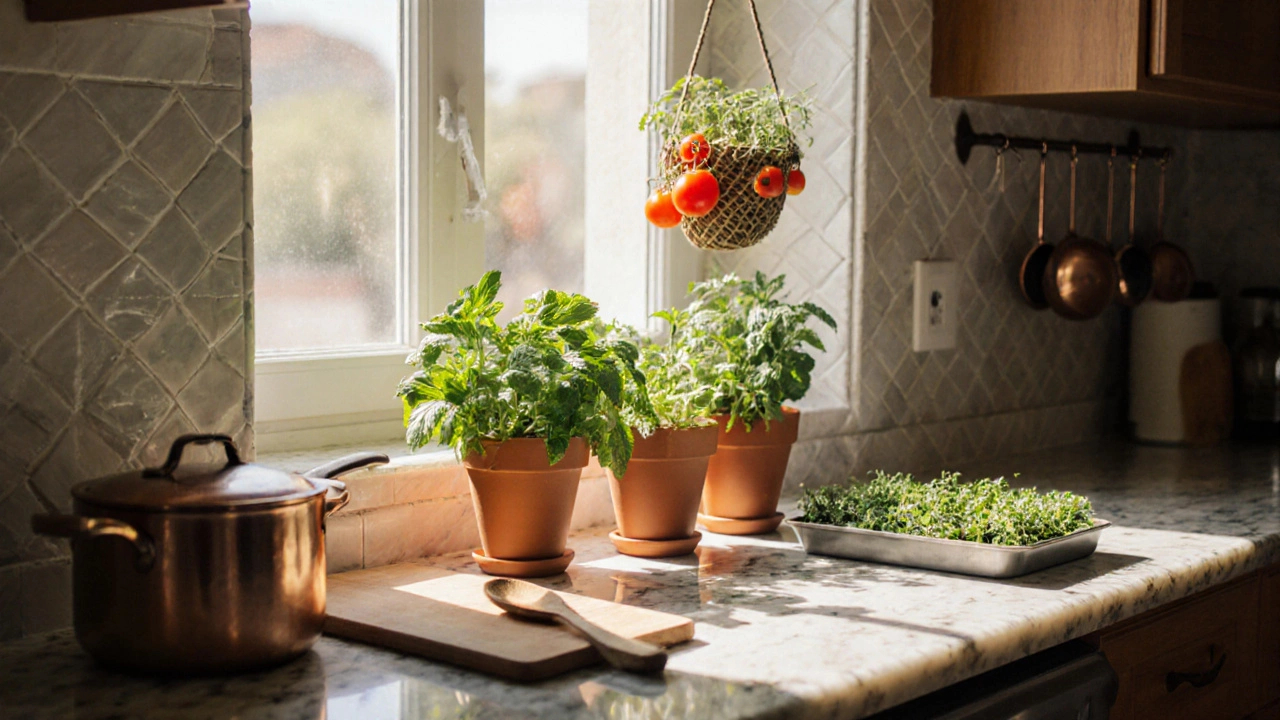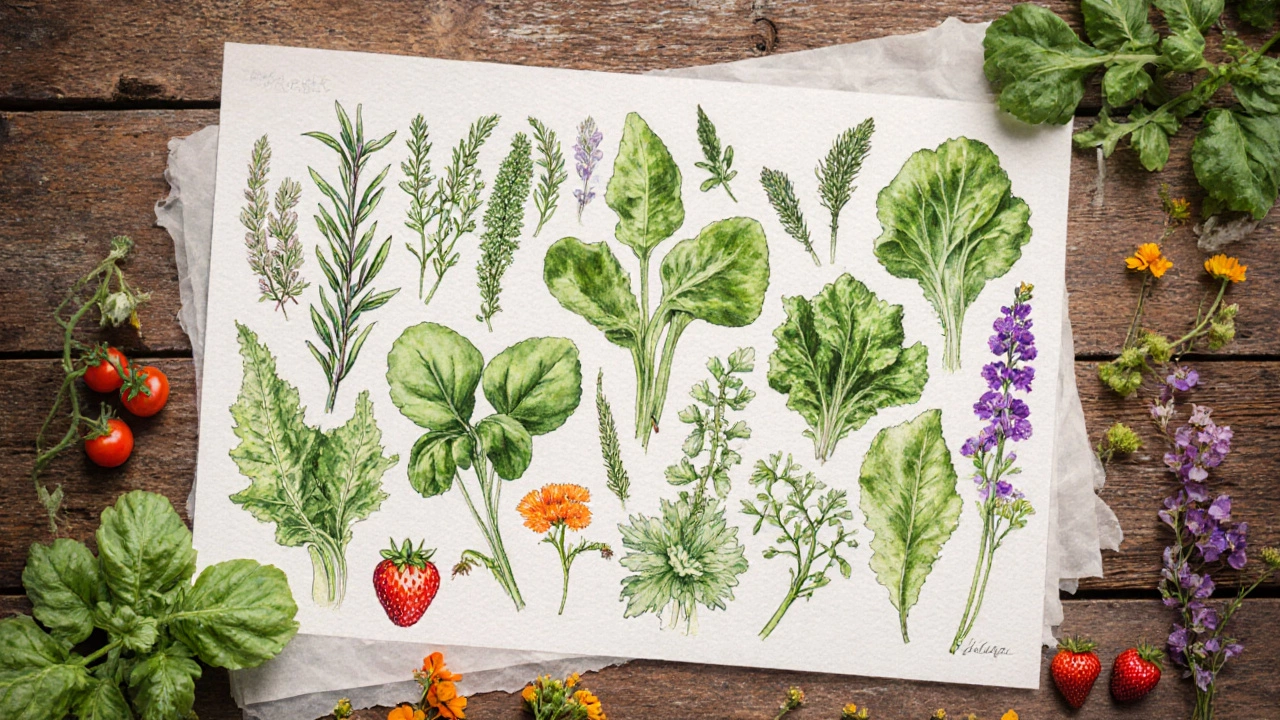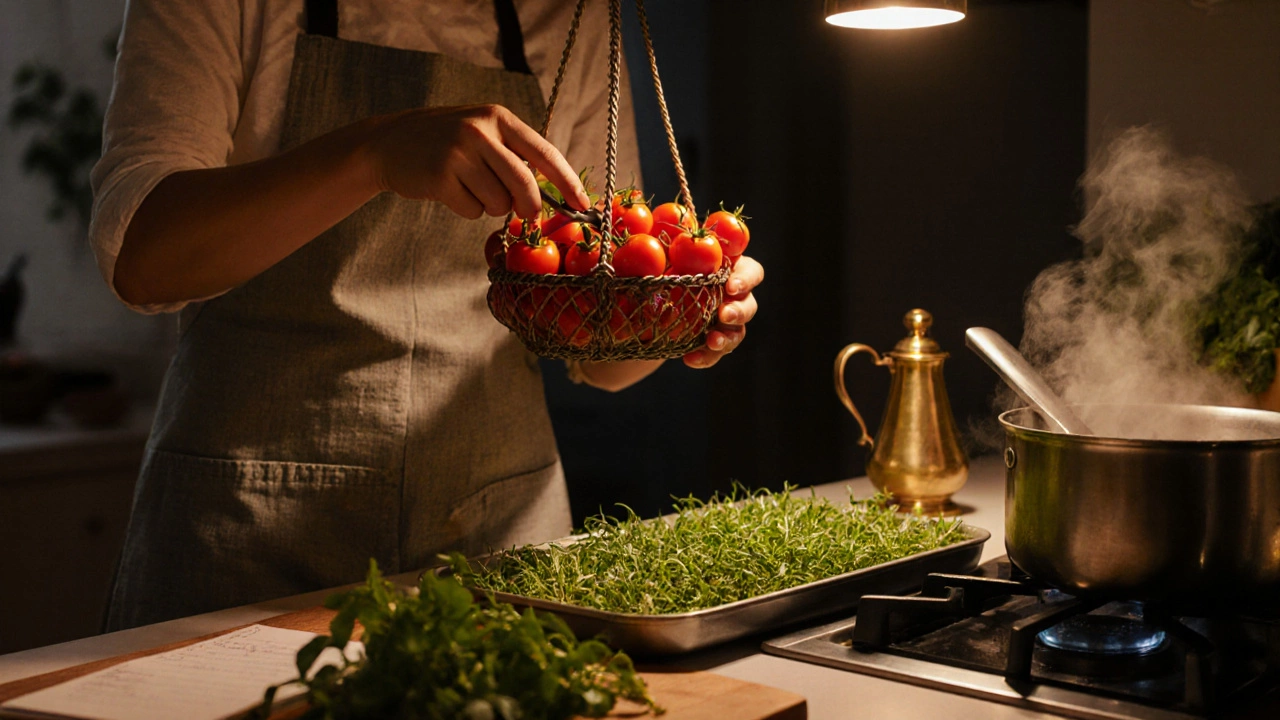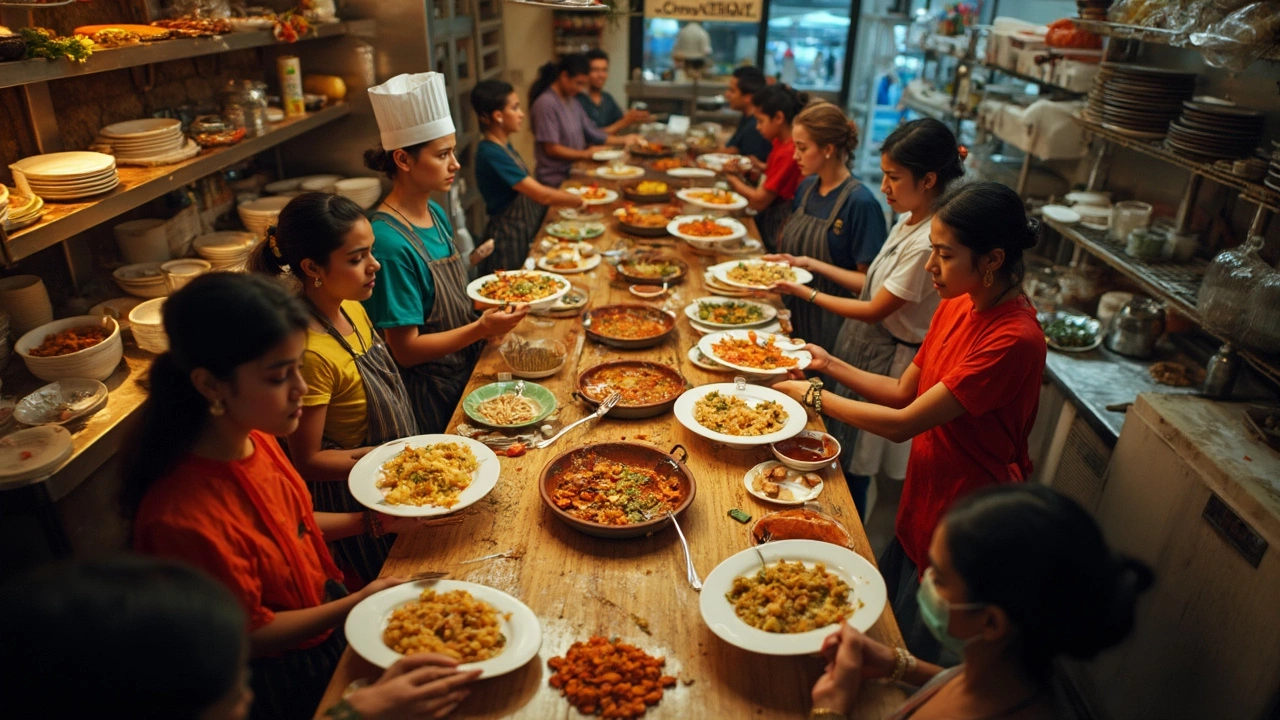Top Kitchen Garden Plants for Fresh Flavors All Year Round

Kitchen Garden Plant Selector
Find Your Perfect Kitchen Plants
Answer a few quick questions about your kitchen conditions to get personalized plant recommendations
When you think about a kitchen garden a compact growing space inside or just outside the cooking area that supplies fresh produce for daily meals, the first question is always: which plants actually thrive there? The answer lies in choosing varieties that love limited space, modest light, and quick harvest cycles. Below we break down the best choices, how to care for them, and a handy comparison table to match plants with your kitchen conditions.
Why a Kitchen Garden Works
Cooking with ingredients you’ve just snipped from a windowsill feels unbeatable. Besides flavor, a kitchen garden saves money, reduces food waste, and adds a splash of green to otherwise sterile countertops. The trick is to focus on plants that tolerate the temperature swings of a kitchen, can be harvested repeatedly, and don’t demand a sprawling bed.
Herbs - The Everyday Essentials
Basil a warm‑loving annual herb that delivers pungent, sweet leaves perfect for pesto, salads, and tomato sauces tops most kitchen garden lists. It prefers bright, indirect light (about 4-6 hours) and a well‑draining pot. Water when the top inch of soil feels dry; over‑watering leads to root rot.
Other staple herbs include:
- Parsley a biennial herb that adds fresh, slightly peppery flavor to soups, stews, and garnish
- Mint a vigorous perennial that thrives in shade and offers cooling notes for drinks and salads
- Rosemary a woody evergreen that tolerates drier soil and pairs well with roasted vegetables and meats
- Thyme a low‑growth herb that likes full sun and can survive occasional neglect
All these herbs can be grown in 6‑inch pots on a sunny windowsill or a hanging basket. Trim regularly to encourage bushier growth and prevent flowering, which can make leaves bitter.
Leafy Greens - Fast, Nutritious, and Versatile
Spinach a cool‑season annual that reaches harvest in 4-5 weeks, delivering iron‑rich leaves for salads, smoothies, and sautés loves partial shade, making it perfect for a kitchen that doesn’t get full sun.
Other greens worth trying:
- Kale a hardy leafy that tolerates cooler temperatures and can be harvested leaf‑by‑leaf over several months
- Arugula a peppery annual that matures in 3 weeks, ideal for topping pizzas and sandwiches
- Lettuce a quick‑growing salad staple; loose‑leaf varieties handle partial shade better than crisphead types
Plant seeds in a shallow tray with a light potting mix. Keep the soil consistently moist and provide at least 2-3 hours of indirect sunlight. Harvest the outer leaves first to keep the plant productive.

Compact Fruit Options - Sweet Treats Within Reach
Cherry Tomatoes small, bite‑size fruits that can be grown in 12‑inch containers and produce over a 60‑day period love bright light (8+ hours) and warm temperatures. Choose dwarf varieties like ‘Tiny Tim’ or ‘Patio’ that stay under a foot tall.
Other fruit-friendly choices:
- Strawberries everbearing varieties such as ‘Albion’ produce fruit year‑round in containers with good drainage
- Peppers compact bell or hot pepper plants that thrive in 8‑hour light windows and add a splash of color
- Chili Peppers tiny, high‑yielding plants perfect for hot‑sauce enthusiasts
Use a high‑quality potting mix enriched with compost, water when the top inch dries, and fertilize every two weeks with a balanced liquid feed. Support tomatoes with small cages to keep vines upright.
Microgreens - Nutrient Bombs in Days
Microgreens young seedlings harvested at the cotyledon stage, offering intense flavor and up to 40times the nutrients of mature leaves are the ultimate kitchen garden shortcut. Radish, broccoli, and sunflower microgreens can be ready to cut in 7-14 days.
Procedure:
- Spread a thin layer of seed‑starting mix in a shallow tray.
- Scatter seeds evenly; press lightly.
- Cover with a second tray to retain humidity for 2-3 days.
- Uncover, place under a light source (window or LED grow light), and mist daily.
- Harvest with scissors just above the soil once true leaves appear.
Microgreens need no fertiliser; the seed contains enough nutrients for the brief growth period.
Edible Flowers - A Touch of Color
Calendula bright orange petals that add a peppery note to salads and desserts grows well in sunny windowsills and can be harvested throughout the season.
Other edible blooms suitable for a kitchen garden include:
- Nasturtium spicy leaves and vivid flowers that double as garnish and salad ingredient
- Viola delicate purple blossoms used to decorate cakes and cocktails
These plants prefer well‑drained soil, moderate watering, and at least 4 hours of direct sun.
Comparison Table - Matching Plant to Kitchen Conditions
| Plant | Light Needs | Water Needs | Harvest Time | Ideal Kitchen Use |
|---|---|---|---|---|
| Basil | Full sun (6‑8h) | Moist, well‑drained | 5‑6weeks | Pesto, salads, sauces |
| Spinach | Partial shade (3‑5h) | Consistently moist | 4‑5weeks | Salads, smoothies |
| Cherry Tomatoes | Full sun (8h) | Regular, avoid soggy | 60‑70days | Snacking, sauces |
| Microgreens (radish) | Bright indirect | Light misting | 7‑10days | Garnish, sandwiches |
| Calendula | Full sun (4‑6h) | Moderate, let dry slightly | 8‑10weeks | Salads, teas |
| Mint | Partial shade | Keep soil damp | 3‑4weeks | Drinks, desserts |

Tips for Success in Small Spaces
- Use lightweight containers. Plastic or fabric pots reduce strain on shelves.
- Rotate crops. Move a fast‑growing lettuce out and replace it with basil after a few weeks to keep the soil fresh.
- Employ reflective surfaces. A small mirror opposite a window bounces extra light onto shade‑loving herbs.
- Mind humidity. Kitchens can be steamy; ventilate or use a fan to avoid fungal growth on lettuces.
- Harvest correctly. Snip just above a leaf node for most herbs; the plant will sprout new shoots.
Common Pitfalls & How to Avoid Them
Too much water is the most frequent mistake. Stick your finger into the soil; if the top inch feels dry, water. Over‑fertilising can cause leafy herbs to become leggy, so use a diluted feed once a month.
Another issue is insufficient light. If your kitchen only gets a few hours of direct sun, invest in a compact LED grow light set on a timer (12‑hour cycle works for most herbs).
Next Steps - From Seed to Plate
Start simple: pick three herbs you love, plant them in a sunny windowsill tray, and watch them fill your kitchen with aroma within weeks. Once you’re comfortable, add a leafy green or a dwarf tomato for a more varied harvest.
Keep a small notebook of planting dates, watering schedules, and harvest yields. Over time you’ll spot patterns - like which corner of the kitchen stays warmest - and you can fine‑tune your setup for maximum freshness.
Frequently Asked Questions
Which herbs grow best in low‑light kitchens?
Mint, parsley, and chives tolerate 2‑3 hours of indirect light. Place them on a north‑facing sill or use a small LED lamp to boost growth.
Can I grow tomatoes on a balcony if my kitchen window is shaded?
Yes. Choose dwarf varieties and position them on a balcony that gets at least 6‑8 hours of sun. Use a portable grow light inside the kitchen for supplemental light during cloudy days.
How often should I fertilise kitchen garden plants?
A half‑strength balanced liquid fertilizer every two weeks works for most herbs and greens. Reduce feeding for fruiting plants once they start producing.
What container size is ideal for a kitchen herb?
A 6‑inch pot (15cm) provides enough root space for most herbs while fitting comfortably on a windowsill.
Do microgreens need any fertilizer?
No. The seed contains all nutrients required for the short 7‑14day growth cycle.





